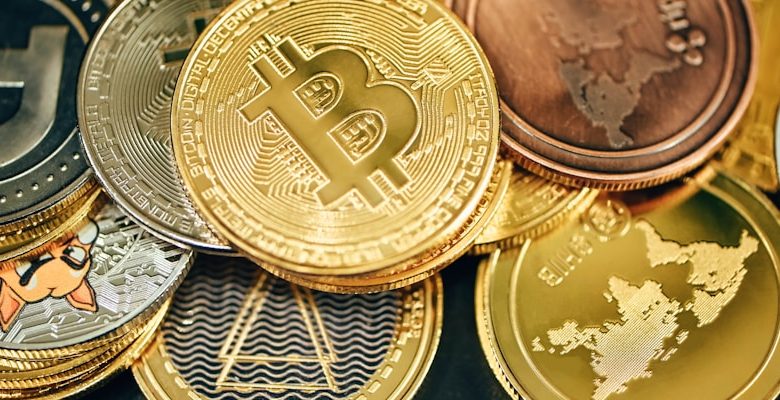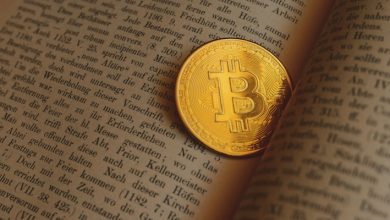What is Tokenization? How It’s Transforming Assets on the Blockchain

- Understanding Tokenization and its Role in Blockchain Technology
- The Evolution of Asset Ownership: Tokenization Explained
- Benefits of Tokenizing Assets on the Blockchain
- Tokenization: A Game-Changer for Traditional Asset Management
- Exploring the Potential of Tokenization in Real Estate and Finance
- Challenges and Opportunities in the Tokenization of Assets
Understanding Tokenization and its Role in Blockchain Technology
Tokenization plays a crucial role in the world of blockchain technology. It involves converting real-world assets into digital tokens that can be traded on a blockchain. This process allows for fractional ownership of assets, making it easier for investors to buy and sell smaller portions of valuable assets.
Tokenization has the potential to revolutionize traditional financial markets by increasing liquidity, reducing transaction costs, and providing greater accessibility to a wider range of investors. By tokenizing assets such as real estate, art, or commodities, individuals can invest in assets that were previously out of reach.
In addition to financial assets, tokenization can also be applied to other forms of value, such as loyalty points, intellectual property rights, or even personal data. This opens up new possibilities for creating unique digital assets that can be easily traded and transferred on a blockchain.
Overall, tokenization is transforming the way we think about ownership and value exchange. By leveraging blockchain technology, tokenization is breaking down barriers and democratizing access to a diverse range of assets. As the technology continues to evolve, we can expect to see even more innovative use cases for tokenization in the future.
The Evolution of Asset Ownership: Tokenization Explained
Tokenization is revolutionizing the way assets are owned and traded on the blockchain. By digitizing real-world assets such as real estate, art, or stocks, tokenization allows for fractional ownership and increased liquidity. This process involves converting the rights to an asset into digital tokens that can be bought, sold, and traded on a decentralized platform.
One of the key benefits of tokenization is the ability to democratize access to assets that were previously out of reach for many investors. By breaking down assets into smaller, more affordable units, tokenization opens up investment opportunities to a wider range of individuals. This can help to reduce barriers to entry and promote financial inclusion.
Furthermore, tokenization can also streamline the process of asset ownership and transfer. By using smart contracts on the blockchain, tokenized assets can be securely and efficiently transferred between parties without the need for intermediaries. This not only reduces costs but also minimizes the risk of fraud or errors in the transaction process.
Overall, the evolution of asset ownership through tokenization represents a significant shift in the way assets are managed and traded. As more assets are tokenized and brought onto the blockchain, we can expect to see increased efficiency, transparency, and accessibility in the global financial markets.
Benefits of Tokenizing Assets on the Blockchain
Tokenizing assets on the blockchain offers a wide range of benefits that can revolutionize the way we think about traditional assets. One of the key advantages of tokenization is increased liquidity. By digitizing assets and representing them as tokens on the blockchain, it becomes much easier for investors to buy and sell these assets quickly and efficiently. This can open up investment opportunities to a larger pool of investors, as well as reduce the time and cost associated with trading traditional assets.
Another benefit of tokenizing assets on the blockchain is increased transparency. Since all transactions are recorded on the blockchain and can be viewed by anyone, there is a higher level of transparency in the asset ownership and trading process. This can help to reduce fraud and increase trust among investors, as they can verify the ownership and history of an asset with ease.
Tokenization also allows for fractional ownership of assets, meaning that investors can purchase smaller portions of high-value assets. This can help to democratize investing and give individuals access to assets that were previously out of reach. Additionally, tokenization can reduce the barriers to entry for investing in certain assets, as it can lower the minimum investment amount required.
Furthermore, tokenizing assets can also streamline the process of asset management and increase efficiency. By automating certain processes through smart contracts on the blockchain, asset owners can reduce the need for intermediaries and paperwork, saving time and costs in the long run. This can make asset management more accessible and cost-effective for both issuers and investors.
In conclusion, the benefits of tokenizing assets on the blockchain are numerous and can have a transformative impact on the investment landscape. From increased liquidity and transparency to fractional ownership and streamlined asset management, tokenization offers a wealth of opportunities for investors and issuers alike. As the technology continues to evolve, we can expect to see even more innovative use cases for tokenization in the future.
Tokenization: A Game-Changer for Traditional Asset Management
Tokenization is a revolutionary concept that is reshaping the landscape of traditional asset management. By converting real-world assets into digital tokens on the blockchain, tokenization offers a range of benefits to investors and asset managers alike.
One of the key advantages of tokenization is increased liquidity. By fractionalizing assets into smaller, more easily tradable units, tokenization opens up new markets and investment opportunities that were previously inaccessible to many investors. This enhanced liquidity also allows for greater diversification and risk management within investment portfolios.
Furthermore, tokenization streamlines the process of asset management by automating tasks such as compliance, reporting, and distribution of returns. This not only reduces costs and administrative burdens for asset managers but also enhances transparency and accountability for investors.
Another game-changing aspect of tokenization is the potential for increased security and fraud prevention. By leveraging blockchain technology, tokenized assets are stored on a decentralized ledger that is immutable and tamper-proof. This provides a higher level of security compared to traditional asset management systems, where the risk of fraud and manipulation is more prevalent.
Overall, tokenization is revolutionizing the way assets are managed and traded, offering a more efficient, transparent, and secure alternative to traditional asset management practices. As the adoption of blockchain technology continues to grow, we can expect to see even greater innovation and disruption in the asset management industry.
Exploring the Potential of Tokenization in Real Estate and Finance
Tokenization in real estate and finance is a promising trend that is revolutionizing how assets are managed and traded on the blockchain. By converting physical assets into digital tokens, it opens up a world of new opportunities for investors and stakeholders alike.
One of the key benefits of tokenization is increased liquidity. By fractionalizing assets into smaller, more affordable units, it allows a wider range of investors to participate in real estate and finance markets. This can lead to greater market efficiency and price discovery, benefiting both buyers and sellers.
Tokenization also offers greater transparency and security. All transactions are recorded on the blockchain, providing a tamper-proof record of ownership and transfer. This can help prevent fraud and ensure compliance with regulations, giving investors peace of mind when investing in tokenized assets.
Moreover, tokenization enables faster and more cost-effective transactions. By eliminating intermediaries and automating processes, it reduces the time and costs associated with buying and selling assets. This can make investing in real estate and finance more accessible to a broader audience, driving growth and innovation in these sectors.
Overall, the potential of tokenization in real estate and finance is vast. By leveraging blockchain technology to tokenize assets, it opens up new avenues for investment and trading, paving the way for a more efficient and inclusive financial ecosystem. As the market continues to evolve, it will be exciting to see how tokenization transforms the way we think about and interact with assets in the digital age.
Challenges and Opportunities in the Tokenization of Assets
As with any emerging technology, tokenization of assets comes with its own set of challenges and opportunities. One of the main challenges is the regulatory uncertainty surrounding tokenized assets. Governments around the world are still figuring out how to regulate this new form of asset ownership, which can create barriers to widespread adoption.
On the other hand, tokenization presents a unique opportunity to democratize access to investment opportunities. By fractionalizing assets and allowing investors of all sizes to participate, tokenization has the potential to open up new markets and increase liquidity in traditionally illiquid assets.
Another challenge is the issue of security and trust. As with any digital asset, tokenized assets are vulnerable to hacking and fraud. Implementing robust security measures and building trust within the blockchain ecosystem will be crucial for the long-term success of tokenization.
Despite these challenges, the opportunities presented by tokenization are vast. From real estate to fine art, virtually any asset can be tokenized and traded on the blockchain. This has the potential to revolutionize the way we think about ownership and investment, making it easier for individuals to diversify their portfolios and access new markets.



